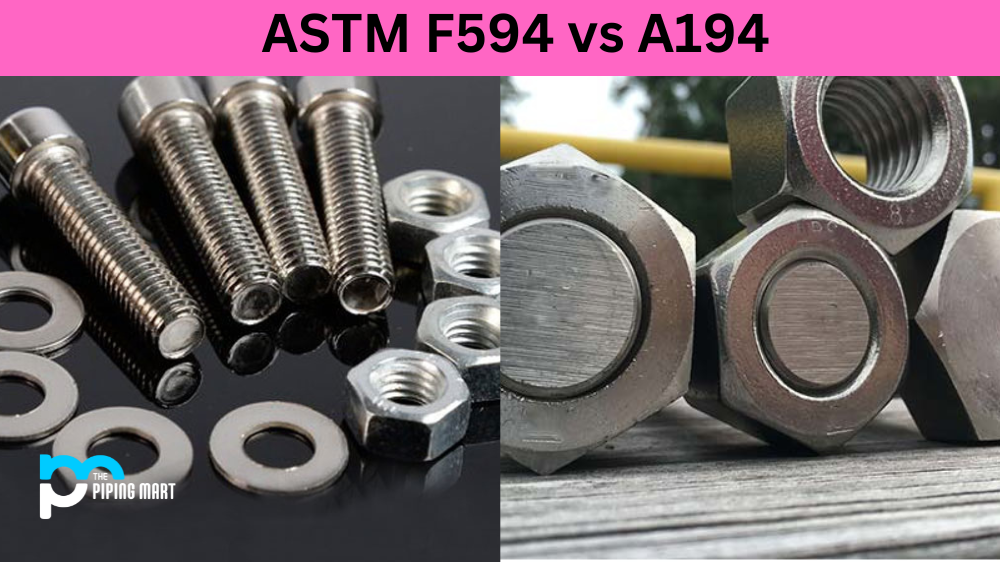Regarding nuts for your fastening needs, it is important to understand the differences between ASTM F594 and A194. These two standards are frequently used interchangeably, but they are not interchangeable. This blog post will discuss the key differences between these two standards, their applications, and how to choose the right nut for your project. So, let’s dive right in!
What is ASTM F594 Nut Standard?
ASTM F594 is a standard that specifies the requirements for stainless steel nuts used in conjunction with bolts, screws, and studs specified in other standards. This standard is primarily used in the chemical and petrochemical industries where corrosion resistance is critical. The ASTM F594 standard covers three grades of austenitic stainless steel nuts: A1-50, A2-70, and A4-80. The numbers indicate the minimum tensile strength in ksi (kilo pounds per square inch) required for each nut grade.
What is A194 Nut Standard?
A194 is a standard that specifies the chemical, mechanical, and dimensional requirements for eight grades of carbon and alloy steel nuts for use in high-pressure and high-temperature service. A194 nuts typically require heat treatment to provide the necessary strength. The grades covered by A194 are Grades 2H, 2HM, 4, 4L, 7, 7M, 8, and 8M. The numbers indicate the minimum yield strength in ksi for each grade.
Difference Between ASTM F594 and A194
Applications
ASTM F594 nuts are typically used in applications with critical corrosion resistance, such as the chemical and petrochemical industries. On the other hand, A194 nuts are primarily used in high-pressure and high-temperature applications, such as steam boilers and pressure vessels.
Choosing the Right Nut
When choosing the right nut for your project, it is important to consider the specific requirements of your application. If you need a nut that can withstand high-pressure and high-temperature service, A194 nuts might be a good fit. However, if corrosion resistance is a top priority, ASTM F594 nuts would be the better option.
Conclusion
In conclusion, it is important to understand the differences between ASTM F594 and A194 nut standards. While both are used for fastening purposes, they have different applications and specifications that make them unique. It’s important to choose the right nut for your specific application to ensure the safety and longevity of your project. We hope this blog post has provided valuable insights and information on these two important standards. If you have any questions or want to learn more about our range of nuts, please do not hesitate to contact us today!

Hey, I’m Krutik, a casual blogger expert in the metal industry. I am passionate about providing valuable information to my readers. With a background in engineering and construction, I like playing Cricket & watching Netflix shows in my free time. Thank you for visiting my blog, and I hope you find my information helpful!




